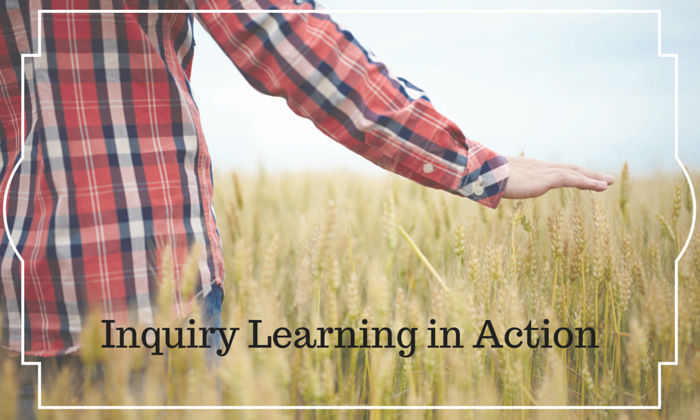Inquiry Learning in Action
As a life-long educator, I have had experience and training in lots of different types of pedagogies. From direct instruction to arts-integration and technology infusion, I’ve tried lots of different methods to share knowledge and engage students in learning. Perhaps my favorite learning stance of all is inquiry-based learning.
While many claim that inquiry learning is a method inspired by constructivists such as Piaget, Vygotsky, Dewey, Freire and others, I tend to believe the roots are much older. Perhaps as old as we humans are ourselves, as independent thinkers and wonderers. I think we can see inspiration in the way in which Aristotle modeled learning as one of the greatest teachers and thinkers in history. Inquiry-based learning, grounded on the notion of asking questions or posing problems to be solved, can take various forms. It’s often articulated in the classroom in a scaffolded manner to support the gradual release of control of learning from teacher to student.
Inquiry Learning on Matinicus Island
While teaching in a one-room-schoolhouse off the coast of Maine last fall, I had the opportunity to do experiments in collaborative inquiry with two of my young students. Noting our common need to get to know the island and the community of folks who tended to its day-in-day-out functions, we spent most of our afternoons out on the land. We started each afternoon with a map, deciding which of the cardinal directions to follow, which destinations to visit. We also thought of questions we had about the island, its history, and its current residents. Along the way, we inevitably met many of our neighbors. I introduced myself to each, modeling for my students a firm handshake and direct eye contact. They quickly learned to follow suit and began asking all sorts of questions about people’s lives, jobs, and interests. My main task at that point, as their learning facilitator, was to document their conversations and questions, and to take pictures.
What was most interesting about our adventures was the way in which these early practices impacted the boys. Having been a bit shy at first, they both became very interested in greeting each and every neighbor who came along the main road in front of the school each day during morning recess. When adults stopped to chat with me or to drop into the town hall which sat next to our playground, the boys often stopped playing and came over to listen to the conversations. The learning we did together helped us to create a digital storybook as well as a full-sized map of the island, marked with the locations we’d visited together.
Inquiry Learning’s Lasting Impact and An Opportunity to Further Explore
While my tenure on the island was short, I departed just before Thanksgiving, I believe the impact of inquiry will remain with the students I served. Knowing that they now are capable of asking questions and following their own interests are two powerful sets of tools for learning. If you’d like to know more about inquiry learning and how to tailor it to your particular learning situation, I welcome you to join me in the course I’ve developed for Eduspire, “Inquiry-Based Learning.” It will allow you the opportunity to build lesson or unit plans to launch in your classroom!

